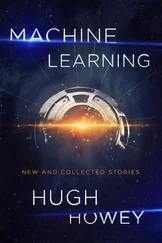The right of Astrid Wood to be identified as the author of this work has been asserted in accordance with law.
Registered Office(s)
John Wiley & Sons, Inc., 111 River Street, Hoboken, NJ 07030, USA
John Wiley & Sons Ltd, The Atrium, Southern Gate, Chichester, West Sussex, PO19 8SQ, UK
Editorial Office
9600 Garsington Road, Oxford, OX4 2DQ, UK
For details of our global editorial offices, customer services, and more information about Wiley products visit us at www.wiley.com.
Wiley also publishes its books in a variety of electronic formats and by print-on-demand. Some content that appears in standard print versions of this book may not be available in other formats.
Limit of Liability/Disclaimer of Warranty
The contents of this work are intended to further general scientific research, understanding, and discussion only and are not intended and should not be relied upon as recommending or promoting scientific method, diagnosis, or treatment by physicians for any particular patient. In view of ongoing research, equipment modifications, changes in governmental regulations, and the constant flow of information relating to the use of medicines, equipment, and devices, the reader is urged to review and evaluate the information provided in the package insert or instructions for each medicine, equipment, or device for, among other things, any changes in the instructions or indication of usage and for added warnings and precautions. While the publisher and authors have used their best efforts in preparing this work, they make no representations or warranties with respect to the accuracy or completeness of the contents of this work and specifically disclaim all warranties, including without limitation any implied warranties of merchantability or fitness for a particular purpose. No warranty may be created or extended by sales representatives, written sales materials or promotional statements for this work. The fact that an organization, website, or product is referred to in this work as a citation and/or potential source of further information does not mean that the publisher and authors endorse the information or services the organization, website, or product may provide or recommendations it may make. This work is sold with the understanding that the publisher is not engaged in rendering professional services. The advice and strategies contained herein may not be suitable for your situation. You should consult with a specialist where appropriate. Further, readers should be aware that websites listed in this work may have changed or disappeared between when this work was written and when it is read. Neither the publisher nor authors shall be liable for any loss of profit or any other commercial damages, including but not limited to special, incidental, consequential, or other damages.
Library of Congress Cataloging-in-Publication Data
Names: Wood, Astrid, author. | Royal Geographical Society (Great Britain), issuing body. | Institute of British Geographers, issuing body.
Title: How cities learn : tracing bus rapid transit in South Africa / Astrid Wood.
Description: Hoboken, NJ : John Wiley & Sons, Inc., 2022. | Includes bibliographical references and index.
Identifiers: LCCN 2021044851 (print) | LCCN 2021044852 (ebook) | ISBN 9781119794271 (hardback) | ISBN 9781119794288 (paperback) | ISBN 9781119794318 (pdf) | ISBN 9781119794301 (epub) | ISBN 9781119794295 (ebook)
Subjects: LCSH: Bus rapid transit--South Africa. | Transportation--Social aspects-South Africa.
Classification: LCC HE5704.4.A6 W66 2022 (print) | LCC HE5704.4.A6 (ebook) | DDC 388.4/13220968-dc23/eng/20211130
LC record available at https://lccn.loc.gov/2021044851LC ebook record available at https://lccn.loc.gov/2021044852
Cover image: ©Astrid Wood
Cover design by Wiley
Set in 10/12pt Plantin Std by Integra Software Services Pvt. Ltd, Pondicherry, India
1 Cover
2 Serious page
3 Title page
4 Copyright
5 List of Figures
6 List of Abbreviations
7 Series Editors’ Preface
8 Acknowledgements
9 1. Introduction BRT Arrives in South AfricaUnderstanding the South African CityTransport Geography, Policy Mobilities and Learning in and from the SouthUsing Policy Mobilities as a MethodologyStructure of the Book
10 2. Geographies of Knowledge Building an Analytic for TracingTracing through Policy ModelsTracing through Actors and AssociationsTracing through CitiesTracing through Temporalities
11 3. Translating BRT to South Africa IntroductionThe Geography of BRTForming the Bogotá Model of BRTIntroducing BRT in South African Cities Johannesburg’s Rea Vaya Cape Town’s MyCiTi Tshwane’s A Re Yeng Rustenburg’s Yarona Nelson Mandela Bay’s Libhongolethu eThekwini’s Go Durban! A South African Interpretation of BRT About the Station Platform About the Bus About the Bus Lane About the Route BRT and Taxi Transformation The South African Taxi Industry State Intervention in Transportation Negotiating with Taxi Operators Conclusion
12 4. Actors and Associations Circulating BRT IntroductionAn Analytic for Studying Policy ActorsRedefining the Role of Policy Actors Policy Mobilizers of BRT Circulation Intermediaries of BRT Circulation Local Pioneers of BRT Circulation Learning through Networks Networks of Internationals Networks of South Africans Power Dynamics of Networks Conclusion
13 5. The Local Politics of BRT IntroductionThe International Context of BRT Circulation Learning from South America Learning from Africa Learning from India Learning from the North The National Context of BRT Circulation Political Interactions between South African Localities Technical Exchanges between South Africa Localities The Municipal Context of BRT CirculationConclusion
14 6. Repetitive Processes of BRT Adoption IntroductionTracing Transportation Innovation in South AfricaPlanting the Seeds of BRT in South Africa Gradual Processes of Learning Repetitive Processes of Circulation Delayed Processes of Adoption Transportation Innovations Not AdoptedConclusion
15 7. Conclusion IntroductionReflecting on How Cities LearnReflecting on BRT in South Africa
16 Appendix A: Interview Schedule
17 Appendix B: Features of BRT systems in South Africa
18 References
19 Index
20 End User License Agreement
1 Chapter 3Figure 3.1 Number of BRT systems opening annually.Figure 3.2 Map of BRT in South Africa.Figure 3.3 BRT adoption and implementation in South Africa.Figure 3.4 Fashion Square Rea Vaya station, Johannesburg.Figure 3.5 Lagoon Beach MyCiTi station, Cape Town.Figure 3.6 Map of A Re Yeng, Tshwane.Figure 3.7 Hatfield A Re Yeng station, Tshwane.Figure 3.8 Yarona station platform, Rustenburg.Figure 3.9 Features of BRT Systems in Cape Town and Johannesburg.Figure 3.10 Rea Vaya high-floor station, Johannesburg.Figure 3.11 Rea Vaya bus, Johannesburg.Figure 3.12 Rea Vaya bus lane, Johannesburg.Figure 3.13 MyCiTi bus lane, Cape Town.Figure 3.14 Map of the MyCiti, Cape Town.Figure 3.15 Map of Rea Vaya, Johannesburg.Figure 3.16 Modal split in South African cities.Figure 3.17 Public Transport Infrastructure and Systems Grant allocation.Figure 3.18 BRT in political cartoons.
Читать дальше












